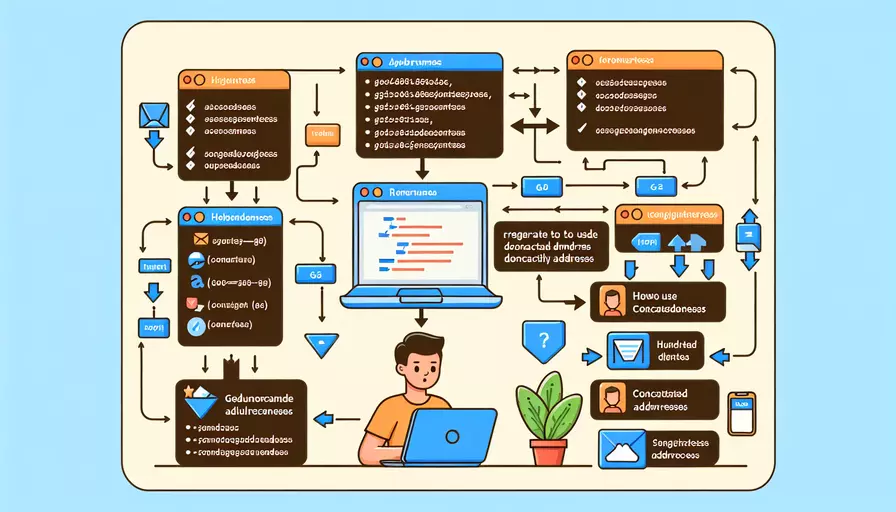
在Vue中使用拼接地址的方法主要有以下几种:1、使用模板字符串、2、使用字符串拼接、3、使用计算属性。这些方法可以帮助你在Vue组件中动态生成URL或其他字符串。下面将详细介绍每种方法的具体实现和应用场景。
一、使用模板字符串
模板字符串(Template Strings)是ES6提供的一种新的字符串字面量。它允许嵌入表达式,通过反引号(“)来定义,能够使拼接字符串变得更加简洁和易读。
示例代码:
<template>
<div>
<img :src="`${baseURL}/images/${imageName}`" alt="Dynamic Image">
</div>
</template>
<script>
export default {
data() {
return {
baseURL: 'https://example.com',
imageName: 'example.jpg'
};
}
};
</script>
在这个示例中,我们使用模板字符串将baseURL和imageName动态拼接成一个完整的URL地址,并将其作为img标签的src属性值。这样可以确保URL的动态生成和更新。
二、使用字符串拼接
字符串拼接是通过使用加号(+)操作符将多个字符串连接在一起。这是传统且广泛使用的字符串拼接方法。
示例代码:
<template>
<div>
<img :src="baseURL + '/images/' + imageName" alt="Dynamic Image">
</div>
</template>
<script>
export default {
data() {
return {
baseURL: 'https://example.com',
imageName: 'example.jpg'
};
}
};
</script>
在这个示例中,我们通过加号操作符将baseURL和imageName拼接成一个完整的URL地址。虽然这种方法在ES6之前很常见,但相比模板字符串,它显得不够简洁和直观。
三、使用计算属性
计算属性(Computed Properties)是一种基于现有数据计算出新数据的Vue特性。它们在模板中被当作属性使用,并且会根据依赖的数据自动更新。
示例代码:
<template>
<div>
<img :src="imageURL" alt="Dynamic Image">
</div>
</template>
<script>
export default {
data() {
return {
baseURL: 'https://example.com',
imageName: 'example.jpg'
};
},
computed: {
imageURL() {
return this.baseURL + '/images/' + this.imageName;
}
}
};
</script>
在这个示例中,我们使用计算属性imageURL来拼接baseURL和imageName。计算属性的优势在于它们会根据依赖的数据自动更新,并且在模板中使用时更加简洁。
四、应用场景和最佳实践
在实际项目中,拼接地址的需求非常普遍,以下是一些常见的应用场景以及最佳实践:
- 动态生成API请求URL:在进行API请求时,经常需要根据不同的参数拼接请求URL。
- 动态生成资源路径:例如图片、音视频文件等资源路径的动态生成。
- 路由地址拼接:在使用Vue Router时,可以根据参数动态生成路由地址。
示例代码:
<template>
<div>
<button @click="fetchData">Fetch Data</button>
<p v-if="data">{{ data }}</p>
</div>
</template>
<script>
export default {
data() {
return {
baseURL: 'https://api.example.com',
endpoint: 'data',
queryParams: '?type=example',
data: null
};
},
methods: {
fetchData() {
const url = `${this.baseURL}/${this.endpoint}${this.queryParams}`;
fetch(url)
.then(response => response.json())
.then(data => {
this.data = data;
})
.catch(error => console.error('Error fetching data:', error));
}
}
};
</script>
在这个示例中,我们动态生成API请求的URL,并使用fetch方法进行数据请求。这样可以根据不同的参数灵活地生成请求URL,提高代码的可维护性和可扩展性。
五、总结和建议
在Vue中使用拼接地址的方法有多种选择,每种方法都有其优点和适用场景。1、使用模板字符串能够使代码更加简洁和易读;2、使用字符串拼接是传统方法,适用于简单场景;3、使用计算属性可以自动更新依赖数据,提高代码的可维护性。
建议在实际开发中,根据具体需求选择合适的方法。如果需要频繁拼接字符串,推荐使用模板字符串或计算属性,以提高代码的可读性和维护性。同时,注意在处理用户输入的数据时,确保URL的安全性,防止潜在的安全漏洞。
通过掌握这些方法,你可以在Vue项目中灵活地拼接地址,满足各种动态生成URL的需求。
相关问答FAQs:
1. 如何在Vue中拼接地址?
在Vue中,我们可以使用模板字符串和计算属性来拼接地址。以下是一个示例:
<template>
<div>
<p>拼接后的地址:{{ concatenatedAddress }}</p>
</div>
</template>
<script>
export default {
data() {
return {
street: 'Main Street',
city: 'New York',
zipCode: '12345'
}
},
computed: {
concatenatedAddress() {
return `${this.street}, ${this.city}, ${this.zipCode}`
}
}
}
</script>
在上面的示例中,我们使用了三个数据属性:street,city和zipCode来表示地址的不同部分。然后,我们使用计算属性concatenatedAddress来拼接这些地址部分,通过模板字符串的方式将它们连接起来。最后,我们在模板中使用插值绑定将拼接后的地址显示出来。
2. 如何在Vue中根据条件拼接地址?
在某些情况下,我们可能需要根据条件来拼接地址。在Vue中,我们可以使用v-if指令来实现这个目的。以下是一个示例:
<template>
<div>
<p>拼接后的地址:{{ concatenatedAddress }}</p>
</div>
</template>
<script>
export default {
data() {
return {
street: 'Main Street',
city: 'New York',
zipCode: '12345',
includeZipCode: true
}
},
computed: {
concatenatedAddress() {
if (this.includeZipCode) {
return `${this.street}, ${this.city}, ${this.zipCode}`
} else {
return `${this.street}, ${this.city}`
}
}
}
}
</script>
在上面的示例中,我们添加了一个名为includeZipCode的数据属性,用于控制是否包含邮政编码。然后,在计算属性concatenatedAddress中,我们使用if语句根据includeZipCode的值来决定是否拼接邮政编码。如果includeZipCode为true,则拼接地址时包含邮政编码,否则不包含。
3. 如何在Vue中动态拼接地址?
在某些情况下,我们可能需要根据用户的输入或其他动态数据来拼接地址。在Vue中,我们可以使用watch属性来监听数据的变化并在变化时重新拼接地址。以下是一个示例:
<template>
<div>
<label for="street">Street:</label>
<input id="street" v-model="street">
<br>
<label for="city">City:</label>
<input id="city" v-model="city">
<br>
<label for="zipCode">Zip Code:</label>
<input id="zipCode" v-model="zipCode">
<br>
<p>拼接后的地址:{{ concatenatedAddress }}</p>
</div>
</template>
<script>
export default {
data() {
return {
street: '',
city: '',
zipCode: ''
}
},
computed: {
concatenatedAddress() {
return `${this.street}, ${this.city}, ${this.zipCode}`
}
},
watch: {
street() {
this.concatenatedAddress()
},
city() {
this.concatenatedAddress()
},
zipCode() {
this.concatenatedAddress()
}
}
}
</script>
在上面的示例中,我们使用watch属性监听street,city和zipCode数据属性的变化。当任何一个数据属性发生变化时,watch中对应的函数会被调用,并重新拼接地址。这样,只要用户输入任何一个地址部分,地址就会动态更新。
文章标题:vue如何使用拼接地址,发布者:飞飞,转载请注明出处:https://worktile.com/kb/p/3649332

 微信扫一扫
微信扫一扫  支付宝扫一扫
支付宝扫一扫 